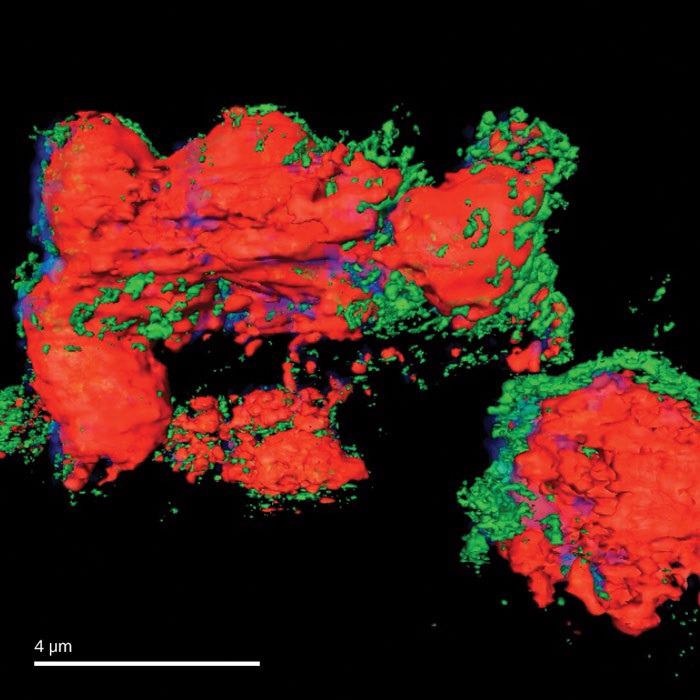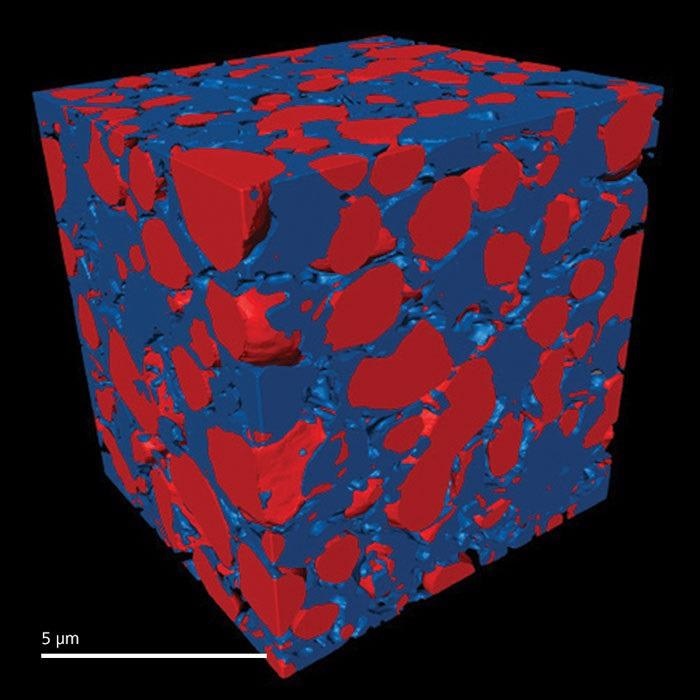ZEISS Xradia Synchrotron solutions enable users to avoid costly and time-consuming in-house development by bringing nanoscale X-Ray imaging to the synchrotron facility. The ultra-bright, adjustable X-Ray beams available at current synchrotron facilities are combined with proprietary X-Ray optics and a known 3D X-Ray microscopy platform.
With a range of contrast settings, users can achieve quick, non-destructive 3D imaging with a resolution of <30 nm. The 3D imaging microscopes of the Xradia Synchrotron series encompass a wide energy range from mild to hard X-Rays.
Highlights
Xradia 800 Synchrotron: Hard X-Ray Nanotomography
Without the requirement for cutting or sectioning at the region of interest, 3D tomographic imaging using X-Rays offers comprehensive volumetric data on interior structures.
The Xradia 800 Synchrotron, which operates in the 5-11 keV energy range, can photograph a wide range of samples with a resolution of <30 nm, comprising battery and fuel cell electrodes, catalysts and hard and soft tissue.
Advanced techniques, including XANES spectro-microscopy for 3D chemical mapping and in situ imaging on the Xradia 800 Synchrotron, help to analyze materials in real-world settings.
Xradia 825 Synchrotron: Soft X-Ray Nanotomography
3D tomographic imaging in the soft X-Ray range, which includes the water window up to 2.5 keV, is appropriate for structural imaging of entire cells and tissues.
Cryogenic sample management allows users to image in a frozen, hydrated condition, reducing radiation damage and keeping the material as near to its natural state as feasible. Chemical state mapping of organic and inorganic materials, as well as imaging of magnetic domains, are also used.

Nickel Battery. Image Credit: Carl Zeiss Microscopy GmbH

Solid Oxide Fuel Cell. Image Credit: Carl Zeiss Microscopy GmbH

Virus-infected Ptk2 Cell. Image Credit: Carl Zeiss Microscopy GmbH
Benefits
Invest time and energy into the study rather than in costly and time-consuming in-house development using ZEISS proven synchrotron systems.
On proven 3D X-Ray microscopy platforms, select the system that best meets specific research needs.
Xradia 800 Synchrotron: Hard X-Ray Nanotomography
- Using XANES spectroscopy, determine the oxidation states of electrochemical devices or catalysts
- Utilize non-destructive 3D tomographic imaging with a resolution of <30 nm for detailed volumetric data without the need for cutting or sectioning at the region of interest
- With exceptional picture quality and throughput, users may experiment with advanced methods and examine a wide range of samples in situ to better understand the impact of real-world operating circumstances
Xradia 825 Synchrotron: Soft X-Ray Nanotomography
- Image the structure of complete cells and tissues while minimizing the impact of radiation damage by adopting cryogenic sample handling
- Use the “water window” energy range to create high-contrast images of organic objects in their natural, wet surroundings
- Correlate to optical fluorescence microscopy for structure and function imaging